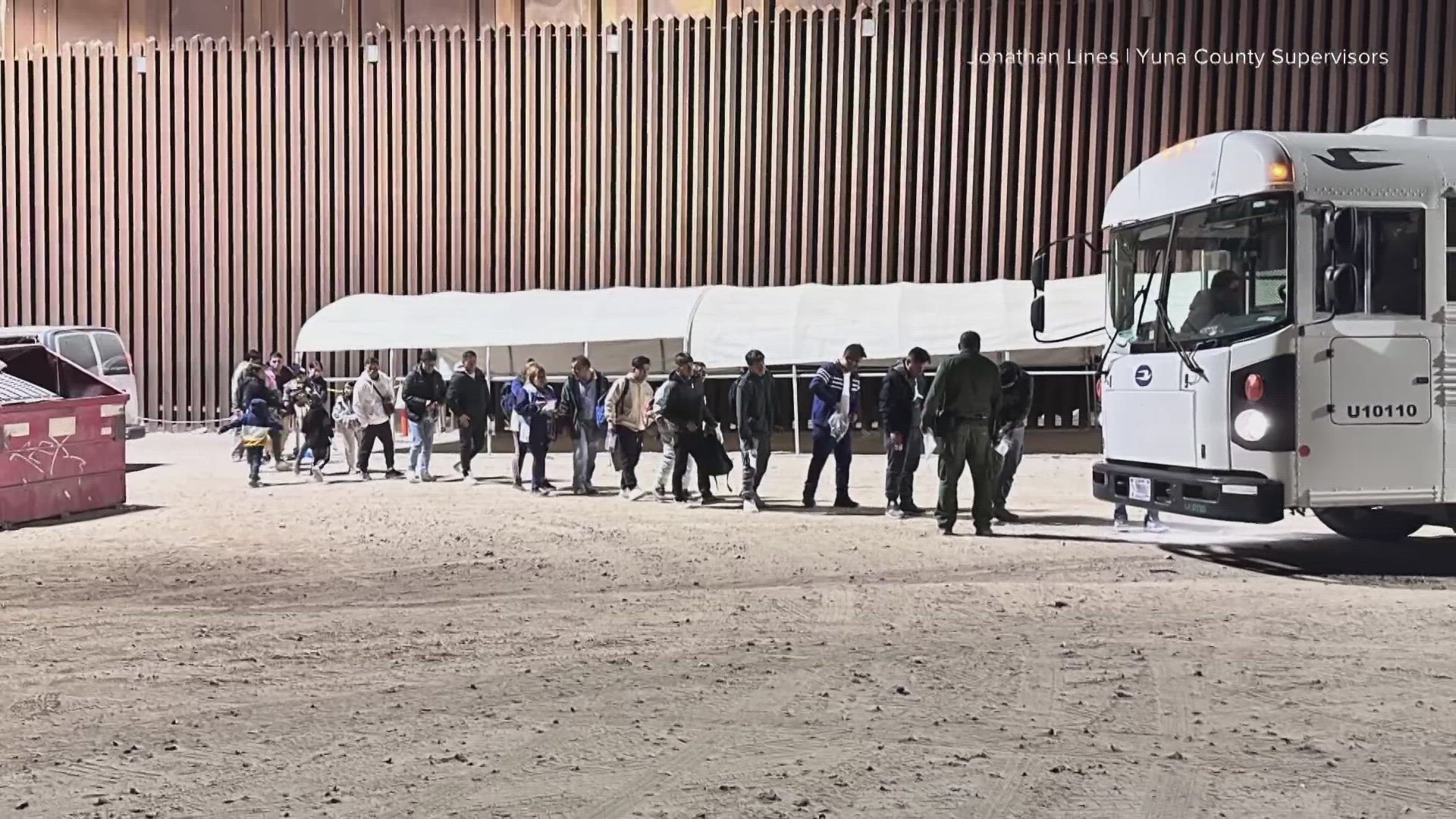PHOENIX — Every Arizona governor over the last two decades has been tested by the border.
The end of Title 42 this week marks the first test for Democratic Gov. Katie Hobbs, five months after taking office.
Under the pandemic-era border policy, migrants could be immediately expelled without a chance to ask for asylum.
The policy's scheduled expiration on Thursday is already elevating the record-breaking number of migrants at the Southwest border.
On Monday, Hobbs rolled out her plan to deal with this latest border crisis. Here are five things to know:
Transportation for migrants
Transportation for migrants once they have applied for asylum in the U.S. is a border-wide issue.
Hobbs said the state would pay to fly or bus asylum seekers toward their preferred destination, where they have support or sponsors.
This transportation system for migrants began under former Republican Gov. Doug Ducey.
The aim was to shame the Biden White House by shipping migrants from Arizona to New York or Washington, D.C. For many migrants, it did bring them closer to their desired location.
Hobbs has kept the trips going with existing funding in the state budget.
"We will make sure that the most cost-effective method of transportation is being used," Hobbs said. The state will also ensure coordination between migrants' sponsors and the agencies that serve migrants.
Yuma Mayor Douglas Nicholls, who attended Hobbs' news conference at the Executive Tower, says transportation is a top priority for a city that doesn't have a shelter.
Nicholls warned that the Border Patrol might have to release migrants to the streets.
"It's essentially havoc right now if you want to look at the reality of the numbers," Nicholls said, citing the surge of border crossers ahead of Title 42's expiration.
Aid for migrant shelters
Arizona shelters will receive state dollars, in addition to federal money obtained by Arizona Sens. Kyrsten Sinema Mark Kelly, to provide more space and services for migrants.
Hobbs said Tucson's shelters were full on Monday. She plans to visit a Casa Alitas shelter in Tucson at 2 p.m. Tuesday.
Public safety role
Hobbs created a joint information command center for all the key players dealing with the anticipated border surge.
"We may be seeing something that we haven't seen before," Col. Jeff Glover, director of the state Department of Public Safety, said in an interview after Hobbs' news conference.
Glover, a former Tempe police chief, said his troopers would be stepping up law enforcement around border communities while providing humanitarian assistance as needed.
"I'm almost certain that there's going to be overtime associated with this," he said.
Hobbs raised the possibility of deploying National Guard troops to help the Border Patrol. Ducey deployed about 550 Guard members to the border during his eight years in office.
What about the cost?
Hobbs couldn't provide a cost estimate for these plans - some funded, some not.
"We don't know the numbers," she said of the cost, "because we don't know the numbers - we don't know what the need is actually going to be."
The first-term Democratic governor says the planning is based on speculation about the projected surge of border crossers in the Southwest.
"We are going to fit the need that is on the ground," she said.
When will troops arrive?
The Biden Administration has pledged to send 1,500 active-duty troops to the Southwest border for tours lasting 90 days.
Hobbs said a "small number" would be deployed in Arizona. But it might take a while for them to get here.
According to a U.S. Defense Department spokesman:
On Wednesday, 500 to 550 troops from the Army and Marines will arrive in El Paso, Texas.
In three weeks, around June 1, the remaining 1,000 troops will arrive.
U.S. Customs and Border Protection will assign them to specific border sectors, but they will remain under military command.
The troops will help the Border Patrol with data entry, warehousing and monitoring the border, but will have no direct contact with migrants.
Up to Speed
Catch up on the latest news and stories on the 12News YouTube channel. Subscribe today.

